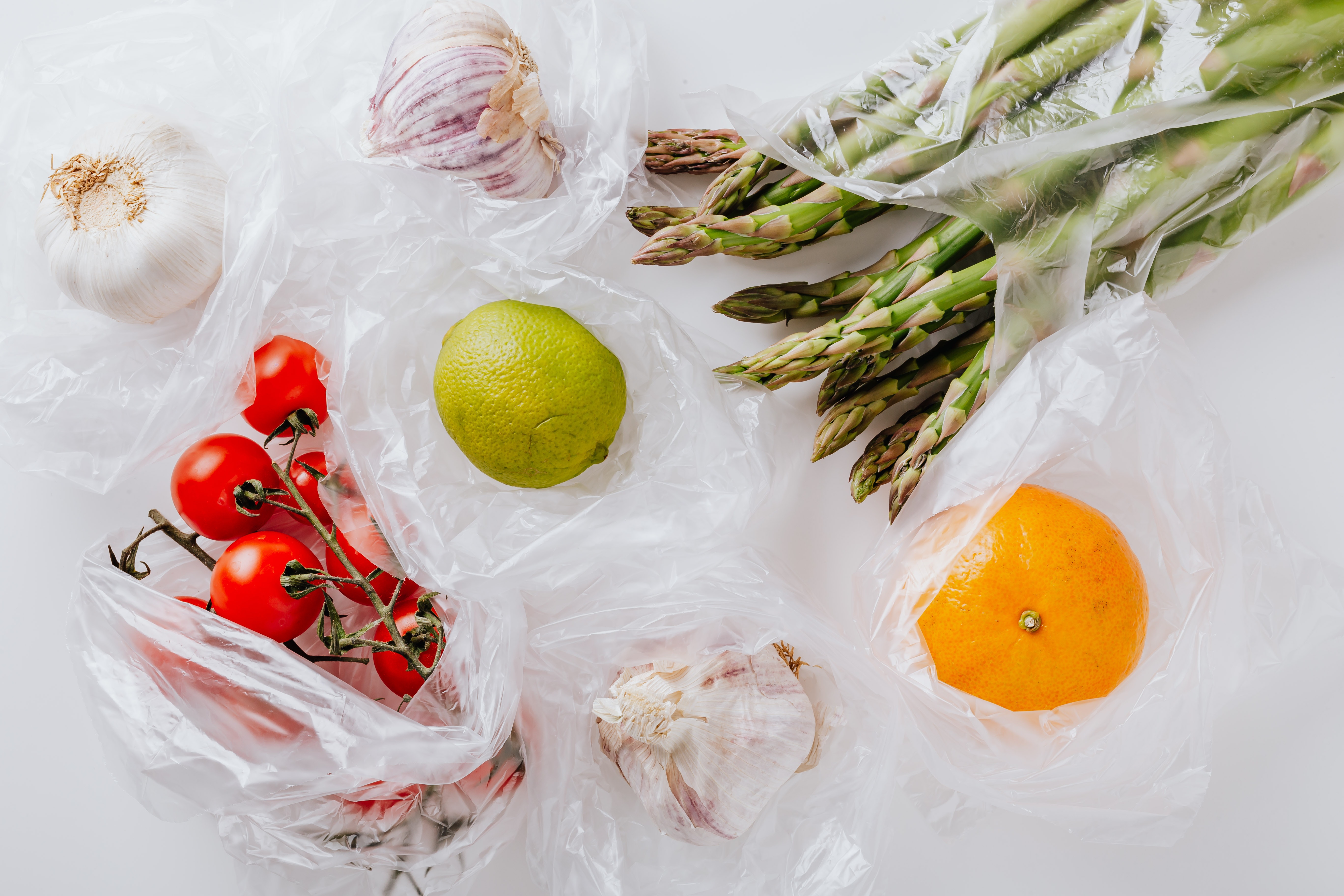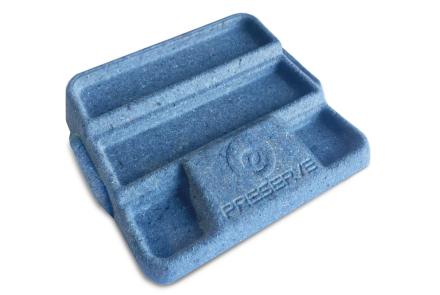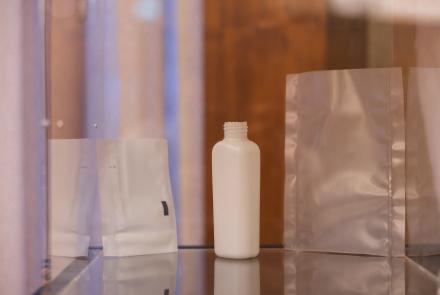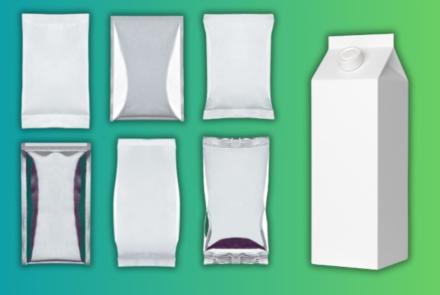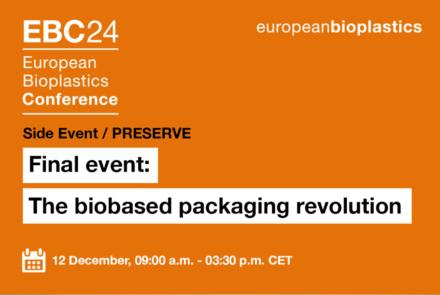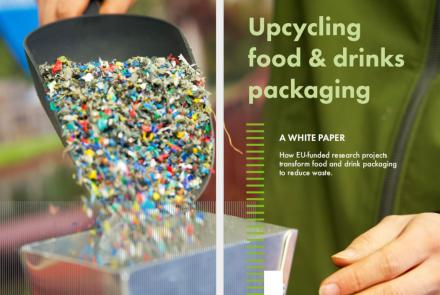Food contact materials: what are they and how do they affect the PRESERVE project
In order to be able to transport and, above all, preserve food and other perishable goods, packaging has become one of the most important aspects of the value chain of any product. Plastic is the preferred material due to its versatility and low cost, but the environmental impact is just one of the negative effects of the widespread use of this material. Plastics can also transfer harmful substances by migration to the packaged product, such as bisphenol A (BPA) or phthalates, which have been linked to adverse health effects.
In packaging materials, safe components are indeed critical in the case of food, drink and personal care products. These products are sold in massive quantities for short-term use and the packaging must be light, resistant and impermeable to gasses and liquids, adapting to the requirements of the packaged product.
Packaging needs to maintain the organoleptic properties of its contents - that is, keeping intact the colour, odour and taste of a product -, while being compliant with existing regulations on food contact materials and other regulations, such as the ones about recycling. The packaging needs to be as inert as possible in order not to be altered by any changes and, above all, not to transfer any harmful substances to the good we are later going to eat or apply on our skin.
We must also take into account that more than four in five Europeans (85%) are worried about the impact on their health of chemicals present in everyday products, while nine in ten (90%) are worried about their impact on the environment.
What do we mean by food contact materials?
As explained by the European Food Safety Authority, food contact materials are all materials and articles intended to come into contact with food, such as packaging and containers, kitchen equipment, cutlery and dishes. These can be made from a variety of materials including plastics, rubber, paper and metal, among others.
Are food contact materials safe?
While food contact materials are generally considered safe, some may pose a potential risk to human health if they contain harmful chemicals that can migrate from the materials into food. The safety of food contact materials depends on many factors, such as the type of material, the food stored or packaged, and the conditions of use in contact with the product.
Governments and international organizations have set regulatory limits on the use of certain substances in food contact materials to ensure they are safe for consumers. However, there is still ongoing research and discussion on the safety of certain food contact materials, and all materials newly developed must comply with a set of rules.
Which are the regulations for food contact materials in the EU?
Food contact materials regulation refers to a set of laws and regulations that aim to ensure that the materials and substances that come into contact with food are safe and do not pose any health risks to consumers. These regulations establish requirements for the composition, quality, and safety of food contact materials, such as packaging, containers, and utensils.
- Regulation on materials and articles intended to come into contact with food (Regulation (EC) No 1935/2004)
A harmonised legal framework for safety for all materials that come into contact with food. The European Commission is currently revising the EU’s rules on food contact materials to take account of the latest science and technology discoveries and support innovation and sustainability of the new materials.
- Regulation on good manufacturing practice for materials and articles intended to come into contact with food (Commission Regulation (EC) No 2023/2006)
All food contact materials must be manufactured in accordance with the practices outlined in this regulation.
- Regulation on plastic materials and articles intended to come into contact with food (EU Regulation No 10/2011)
A regulation setting out rules on the composition of plastic food contact materials and establishing a list of substances that are permitted for use in their manufacture. Specific Migration Limits are established based on the European Food Safety Authority (EFSA) evaluations on the basis of the toxicity data of each specific substance. Detailed migration testing rules are defined.
- Regulation on recycled plastic materials and articles intended to come into contact with food (Commission regulation (EC) 2022/1616)
The new Regulation aims to streamline existing regulations on the development, certification, and use of food contact materials (FCMs), including innovative novel plastic recycling technologies under development to avoid risks to human health and foster innovation. Extensive rules are laid down on the requirements for the development of a novel technology, such as the registration of the novel technology in the newly established union register of technologies, recyclers, recycling processes, recycling schemes, and decontamination installations. The European Commission updates a page with Frequently Asked Question on the regulation.
Safe and Sustainable by Design chemicals and materials: framework for the definition of criteria and evaluation procedure for chemicals and materials
A non-legally binding document in which the Commission makes its views known and suggests a line of action without imposing any legal obligation on those to whom it is addressed. In this document, the Commission invites Member States, industry, academia, research and technology organisations to use the recommendations in their R&I activities to lead the way for safer and more sustainable substances thus increasing their share on the EU market and globally. The recommendation launches a testing period and a voluntary reporting mechanism. Based on the feedback, the Commission will launch a revision of the framework. The testing period counts on the engagement of industry, academia, the research community and support from Member States.- National legislations
In the absence of specific EU measures, EU Member States may maintain or adopt their own national provisions on food contact materials in accordance with Article 6 of Regulation 1935/2004. The EU also set up a specific laboratory, the European Union Reference Laboratory for Food Contact Materials (EURL-FCM), to provide scientific and technical assistance to EU and members states on Food Contact Materials.
How is PRESERVE complying with the food contact materials regulation?
In PRESERVE, we are working with bio-based plastics and fibre-based packaging that will be in contact with food and cosmetic formulations. Those packaging materials based on bioplastics must comply with the same strict regulations as conventional plastics when used in food contact materials and they must undergo the same testing procedures to access the market of the European Union.
Also, we have limited the possible impact of the legal requirements on food contact materials by selecting materials and substances that have been previously approved for such purposes, such as PHA.
For this reason, before preparing our prototypes for the final industry upscale, we test them according to the strict EU regulations: migration analyses of the prototypes will be conducted to verify compliance with food contact materials regulations. Overall migration, specific migration of additives, metals and primary aromatic amines, as well as NIAS (non-intentionally added substances), will be studied during the assessment. The absence of microplastic release will be also tested. To verify the materials’ safety, in vitro assays to determine adverse effects at molecular, organelle and cellular levels will be conducted, covering either acute or chronic adverse response effects on human health such as inflammation, cytotoxicity, and genotoxicity.
In PRESERVE, we are implementing the regulations together with a new approach to packaging, aiming at recovering materials used for primary food packaging and reusing them for secondary raw materials for beauty products and carrier boxes. Our packaging solutions accommodate the growing demands of green and health-conscious consumers concerned about the environment. In fact, EU consumers consider it very important that products should be designed in a way that facilitates the recycling of plastic (67%). They also consider that industry and retailers should make an effort to reduce plastic packaging (67%).
Consumers will benefit from high-quality products due to the improved preservation properties of the new packaging formulations developed in the PRESERVE project that will limit the use of additives in the food. Continuing the research and innovation in food contact materials will help us live in a better environment, not only with reduced plastic pollution, but also with safer options for our health.
Authors: María Monedero Prieto, Arantxa Ballesteros (ITENE), Estela López-Hermoso (EUBP), Mara Mennella (KNEIA)


